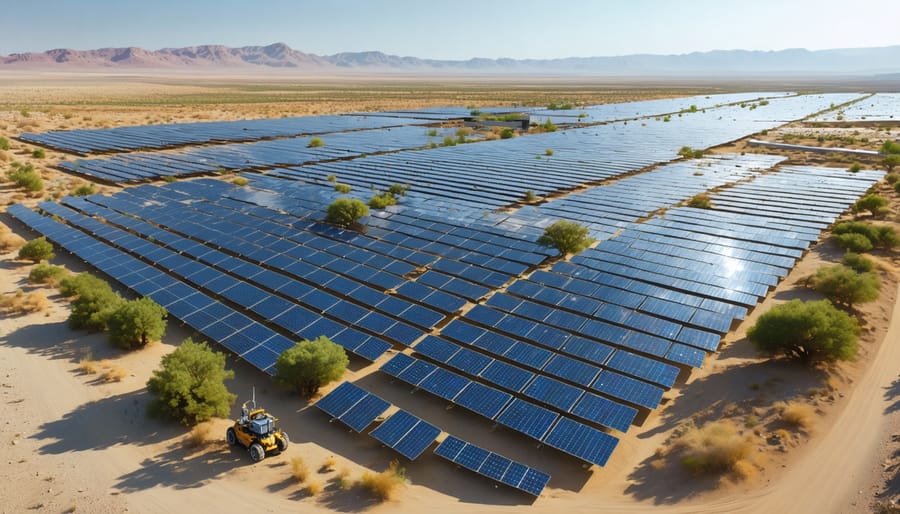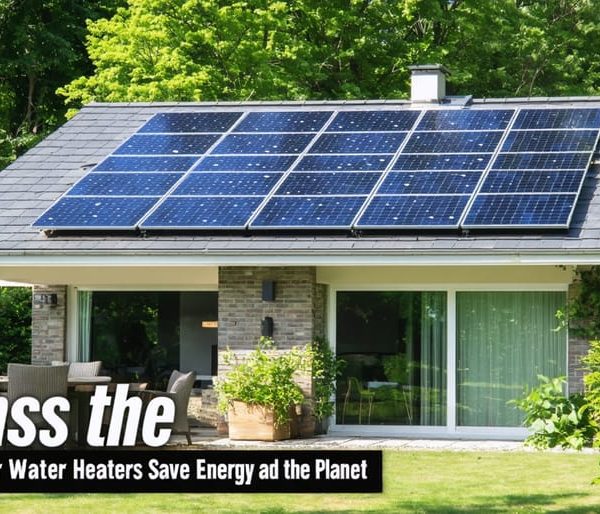Solar Farms and Water: The Surprising Truth About Water Usage
Solar farms are revolutionizing our energy landscape, but many wonder about their impact on our precious water resources. Unlike traditional power plants that consume millions of gallons daily for cooling, solar farms operate with minimal water requirements. The water they do use serves primarily for cleaning dust from solar panels – a process that typically requires less water annually than a typical household.
This remarkable water efficiency makes solar farms a game-changer in regions struggling with water scarcity. While a coal-fired power plant needs roughly 15,000 gallons of water to generate one megawatt-hour of electricity, solar farms require just 20 gallons for the same output. Some advanced solar facilities even employ robotic cleaning systems and hydrophobic panel coatings that further reduce water consumption.
For communities concerned about sustainable energy and water conservation, solar farms offer a compelling solution that delivers clean power while preserving our water resources for future generations.
How Solar Farms Actually Use Water
Panel Cleaning Requirements
Solar farms require regular cleaning to maintain optimal performance, and water plays a crucial role in this maintenance process. Typically, solar panels need cleaning every 6-8 weeks, depending on local weather conditions and dust levels. A standard utility-scale solar farm might use about 500-1,000 gallons of water per megawatt annually for cleaning purposes.
The cleaning process usually involves spraying panels with deionized water to remove dust, bird droppings, and other debris that can reduce energy production efficiency. Many modern solar farms are adopting water-efficient cleaning methods, such as automated cleaning systems that use minimal water or waterless robotic cleaners with specialized brushes.
In desert locations, where many solar farms are situated, operators often employ dry-cleaning techniques or special coatings that reduce the need for frequent washing. Some facilities even collect and recycle the water used in cleaning operations, further minimizing their water footprint.
Advanced scheduling systems help operators time their cleaning activities during periods of natural rainfall, reducing the need for additional water usage while maintaining optimal panel performance.
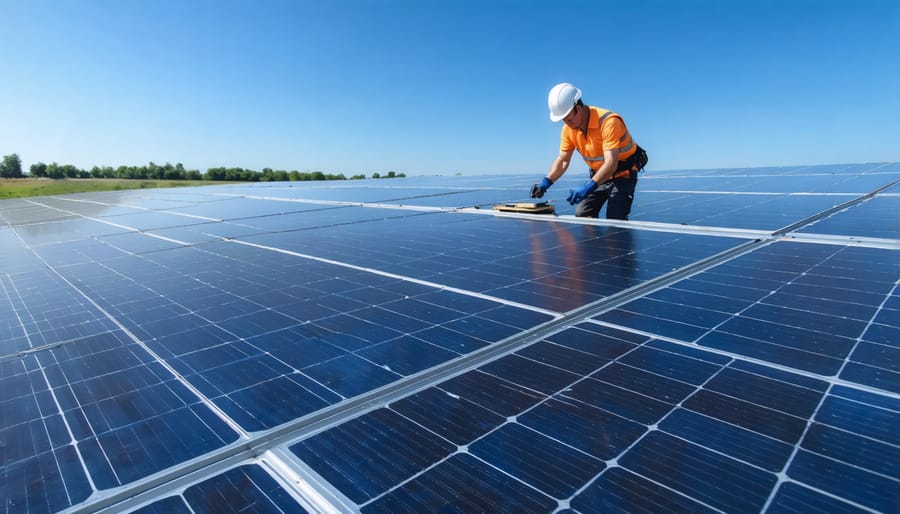
Cooling System Water Usage
While most solar farms use minimal water, certain types of solar thermal installations do require water for cooling purposes. These concentrated solar power (CSP) systems use mirrors to focus sunlight and generate steam to drive turbines. The cooling process helps maintain optimal operating temperatures and efficiency.
A typical CSP plant might use between 600-800 gallons of water per megawatt-hour of electricity produced. However, many modern facilities are adopting dry-cooling technologies or hybrid systems that significantly reduce water consumption. These innovative cooling methods can cut water usage by up to 90% compared to traditional wet-cooling systems.
It’s important to note that traditional photovoltaic (PV) solar farms – which make up the majority of solar installations – don’t need water for cooling at all. They operate efficiently without any cooling systems, requiring only occasional cleaning to remove dust and debris.
When comparing water usage, even CSP plants with wet-cooling systems typically consume less water than conventional fossil fuel power plants, making them a more water-conscious choice for energy production.
Water Conservation Benefits of Solar Farms
Comparison with Traditional Power Plants
When comparing water consumption across different power generation methods, solar farms stand out as one of the most water-efficient options. Traditional fossil fuel power plants typically use between 20,000 to 50,000 gallons of water per megawatt-hour of electricity produced. This water is primarily used for cooling systems and steam generation.
In contrast, utility-scale solar photovoltaic (PV) systems use only about 20 gallons of water per megawatt-hour, mainly for occasional panel cleaning. That’s approximately 1,000 times less water than conventional power plants! Even concentrated solar power (CSP) systems, which use more water than PV panels, consume only about 800 gallons per megawatt-hour – still significantly less than fossil fuel alternatives.
To put this into perspective, a typical coal-fired power plant serving a mid-sized city uses roughly the same amount of water in a day as a 1,000-acre solar farm would use in an entire year. Nuclear power plants are even more water-intensive, requiring up to 60,000 gallons per megawatt-hour for their cooling processes.
This dramatic difference in water consumption makes solar farms particularly valuable in drought-prone regions where water conservation is crucial. By switching from traditional power plants to solar farms, communities can significantly reduce their water footprint while maintaining reliable power generation.
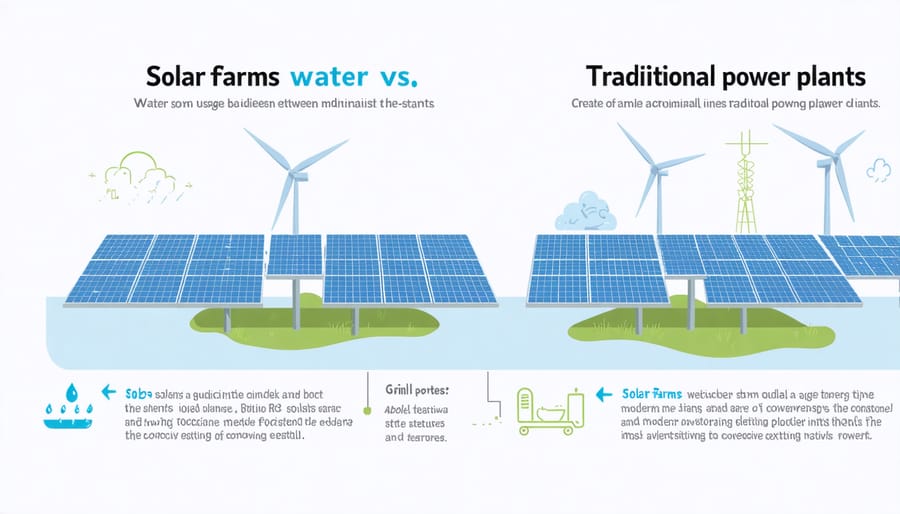
Environmental Impact
Solar farms represent a significant step forward in environmental sustainability, offering numerous benefits beyond just clean energy generation. One of the most impressive aspects is their minimal water footprint compared to traditional power plants. While conventional power generation methods require massive amounts of water for cooling and steam production, solar farms operate with remarkably little water consumption.
The solar water conservation benefits are particularly striking in drought-prone regions, where water resources are precious. By choosing solar over conventional power generation, communities can preserve millions of gallons of water annually. This water savings becomes increasingly important as climate change affects global water availability.
Beyond water conservation, solar farms contribute to ecosystem preservation. Unlike fossil fuel power plants, they don’t discharge heated water into local waterways, protecting aquatic life and maintaining natural water temperatures. They also don’t contribute to water pollution through chemical runoff or cooling tower emissions.
The environmental advantages extend to land use as well. Many solar farms are built on previously disturbed or low-value agricultural land, and the spaces between solar panels can support native vegetation and provide habitat for local wildlife. This dual-use approach creates sustainable environments where clean energy generation and natural ecosystems can coexist harmoniously.
Innovative Water-Saving Technologies in Solar Farms
Waterless Cleaning Systems
Modern solar farms are increasingly adopting waterless cleaning solutions to maintain panel efficiency while conserving precious water resources. These innovative water management technologies include automated robotic cleaners and specialized dry-cleaning systems that keep solar panels operating at peak performance.
Robotic cleaning systems use microfiber brushes and advanced sensors to gently remove dust and debris without scratching the panels. These smart robots work independently, following predetermined paths across the solar arrays while adapting to different weather conditions. Some models even operate at night, ensuring the panels are clean and ready to capture maximum sunlight during the day.
Dry-cleaning technologies have also evolved to include electrostatic systems that repel dust particles from panel surfaces. These systems create a protective barrier that prevents dirt accumulation, reducing the need for regular cleaning. Additionally, some manufacturers now apply special nano-coatings to panel surfaces, making them naturally resistant to dust and soil buildup.
These waterless solutions not only conserve water but also reduce operational costs and minimize panel damage from traditional cleaning methods. Many solar farm operators report significant improvements in energy production after implementing these systems, proving that effective panel maintenance doesn’t have to rely on water consumption.
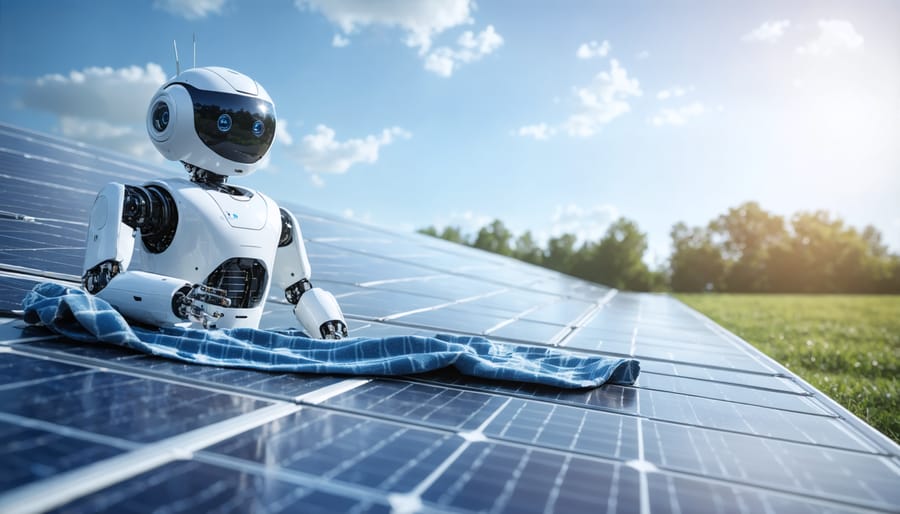
Water Recycling Methods
Modern solar farms employ innovative water recycling systems to minimize their environmental impact and maximize efficiency. The primary method involves collecting and treating the water used for panel cleaning, which can then be reused multiple times before requiring replacement.
One popular technique is the closed-loop cleaning system, where water is filtered through a series of sustainable membranes and stored in dedicated tanks. This process removes dust particles and impurities, making the water suitable for subsequent cleaning cycles. Many facilities also incorporate rainwater harvesting systems, collecting natural precipitation in storage basins for later use.
Advanced solar installations use automated cleaning robots that precisely control water flow, reducing waste by up to 90% compared to manual cleaning methods. These robots typically use high-pressure, low-volume sprayers that optimize water usage while maintaining panel efficiency.
Some facilities have begun implementing drought-resistant landscaping around their panels, reducing the need for irrigation. Others use native plants that require minimal watering, creating a natural ecosystem that supports local wildlife while conserving water resources.
By combining these methods, modern solar farms can significantly reduce their water consumption while maintaining optimal performance, demonstrating that renewable energy and water conservation can work hand in hand.
Solar farms represent a remarkable advancement in sustainable energy production, offering significant advantages when it comes to water conservation. As we’ve explored throughout this article, solar farms use minimal water compared to traditional power generation methods, primarily requiring occasional cleaning and maintenance. This makes them an environmentally responsible choice for our water-stressed world.
The statistics speak for themselves: while conventional power plants consume millions of gallons of water annually for cooling and steam generation, solar farms use just a fraction of that amount. This dramatic reduction in water consumption becomes even more significant when we consider the growing challenges of water scarcity and climate change.
What’s particularly encouraging is that solar farm operators continue to innovate, developing even more water-efficient cleaning methods like robotic cleaners and hydrophobic coatings. These advancements further reduce the already minimal water requirements of solar installations.
For property owners and businesses considering solar energy, the water-saving benefits add another compelling reason to make the switch. Not only do solar farms help reduce carbon emissions and energy costs, but they also contribute to preserving our precious water resources for future generations.
As we move toward a more sustainable future, solar farms demonstrate that we don’t have to choose between meeting our energy needs and protecting our water resources. They prove that with smart technology and thoughtful design, we can achieve both goals simultaneously. By choosing solar power, we’re not just investing in clean energy – we’re also taking a crucial step toward responsible water stewardship and environmental protection.

